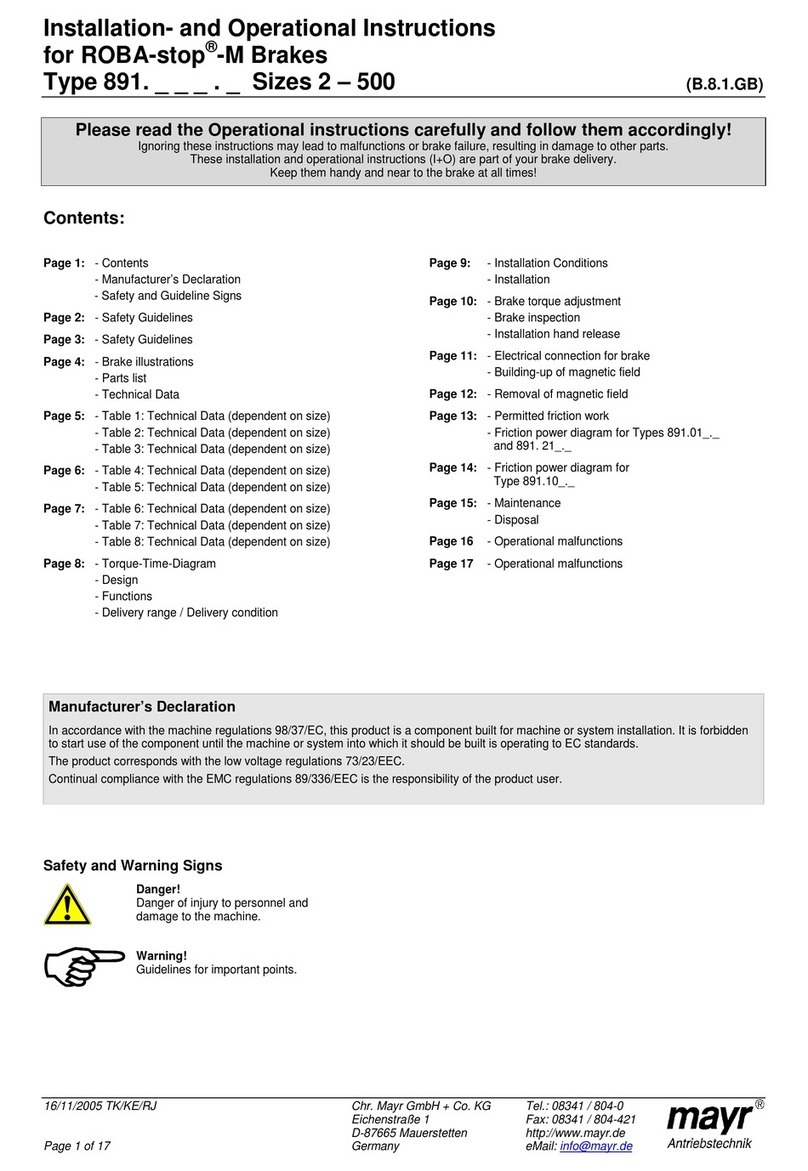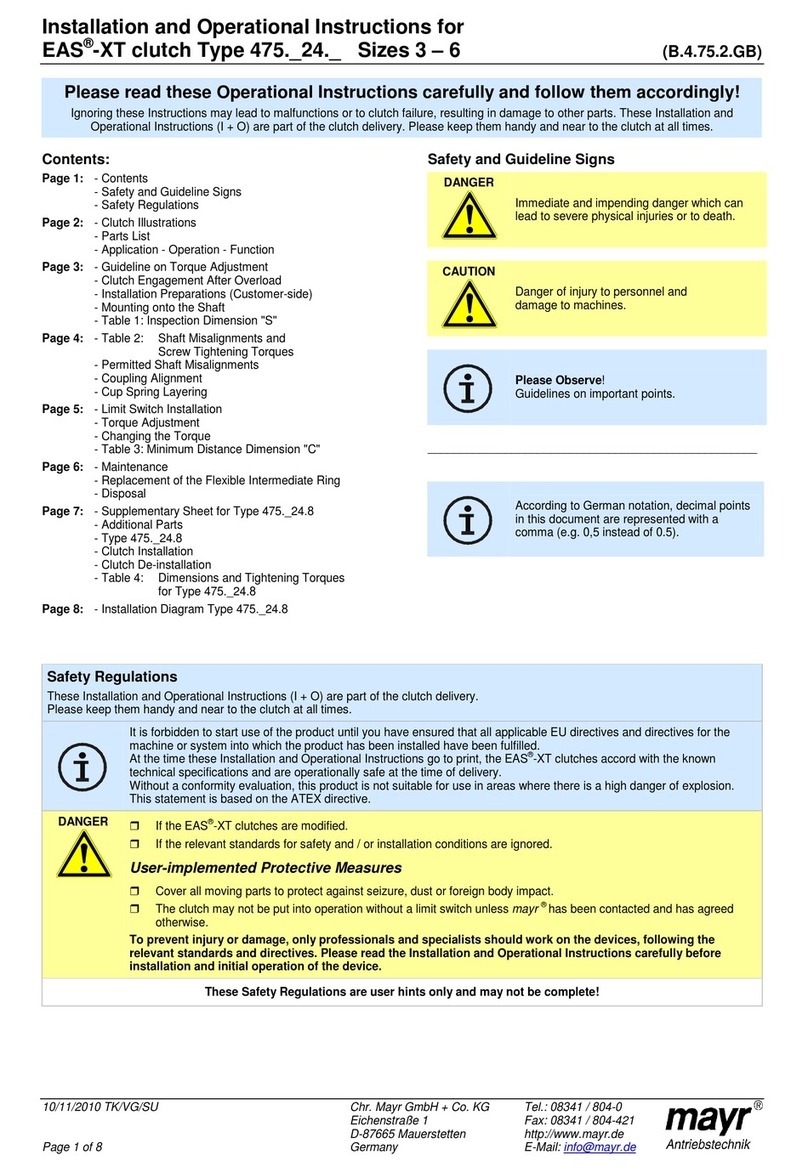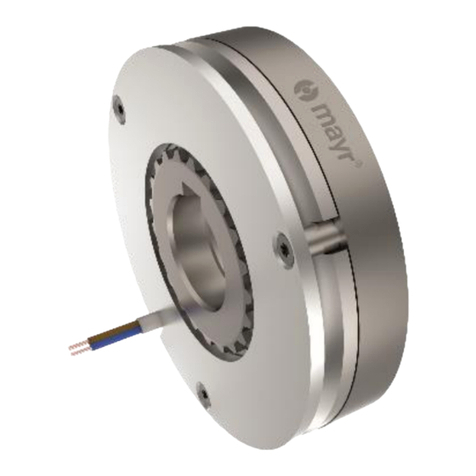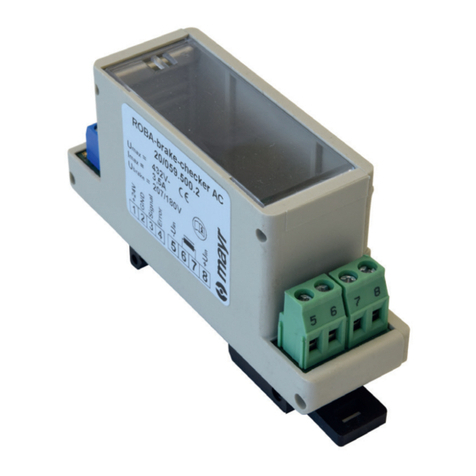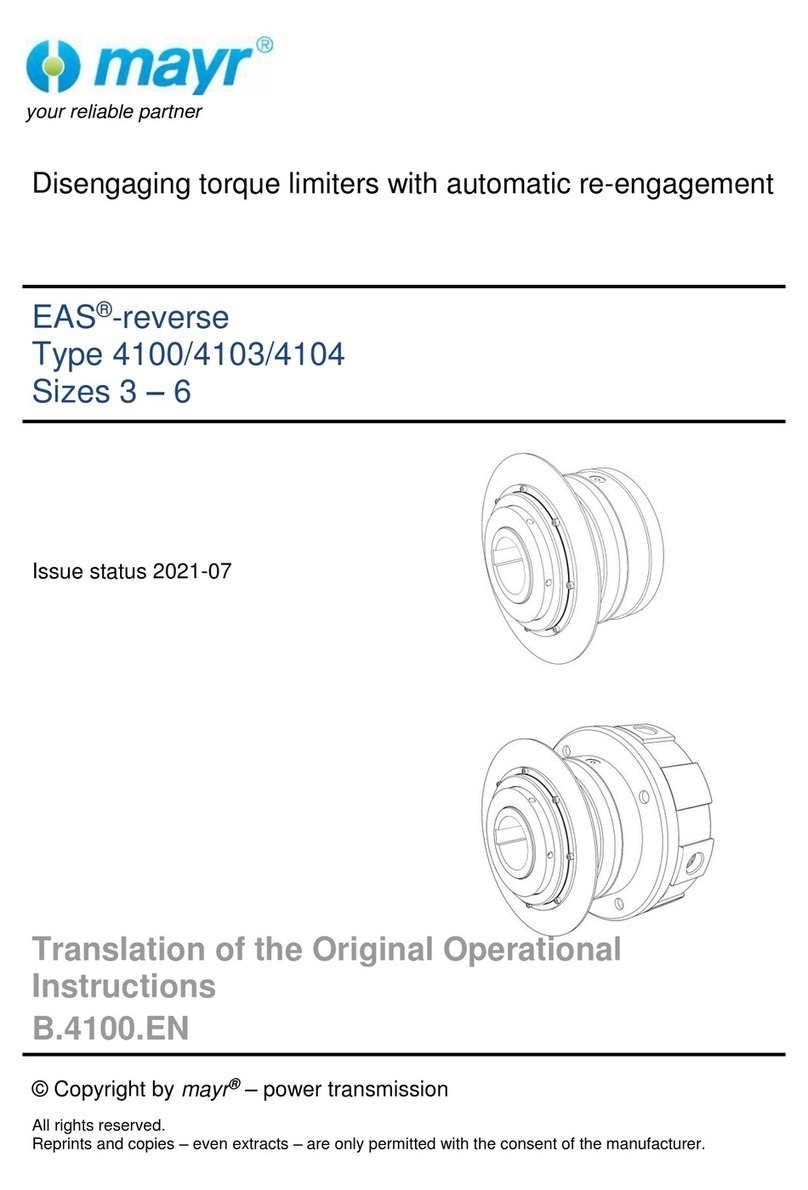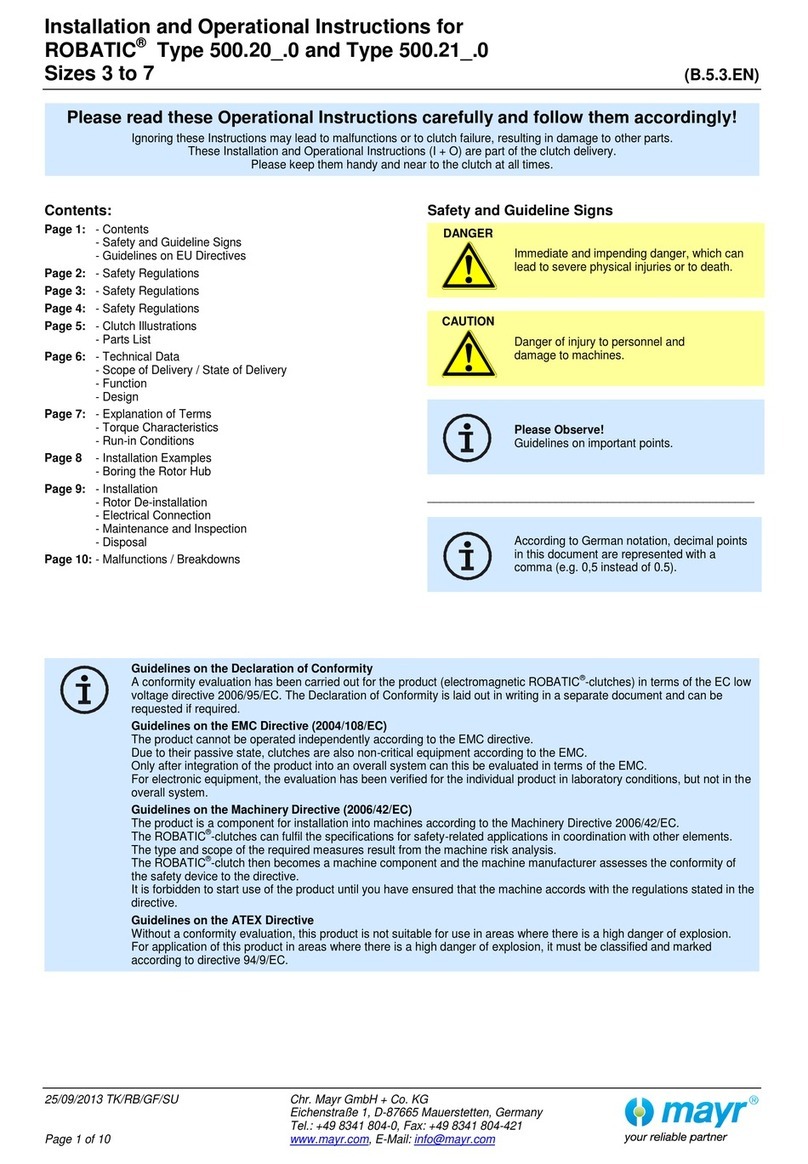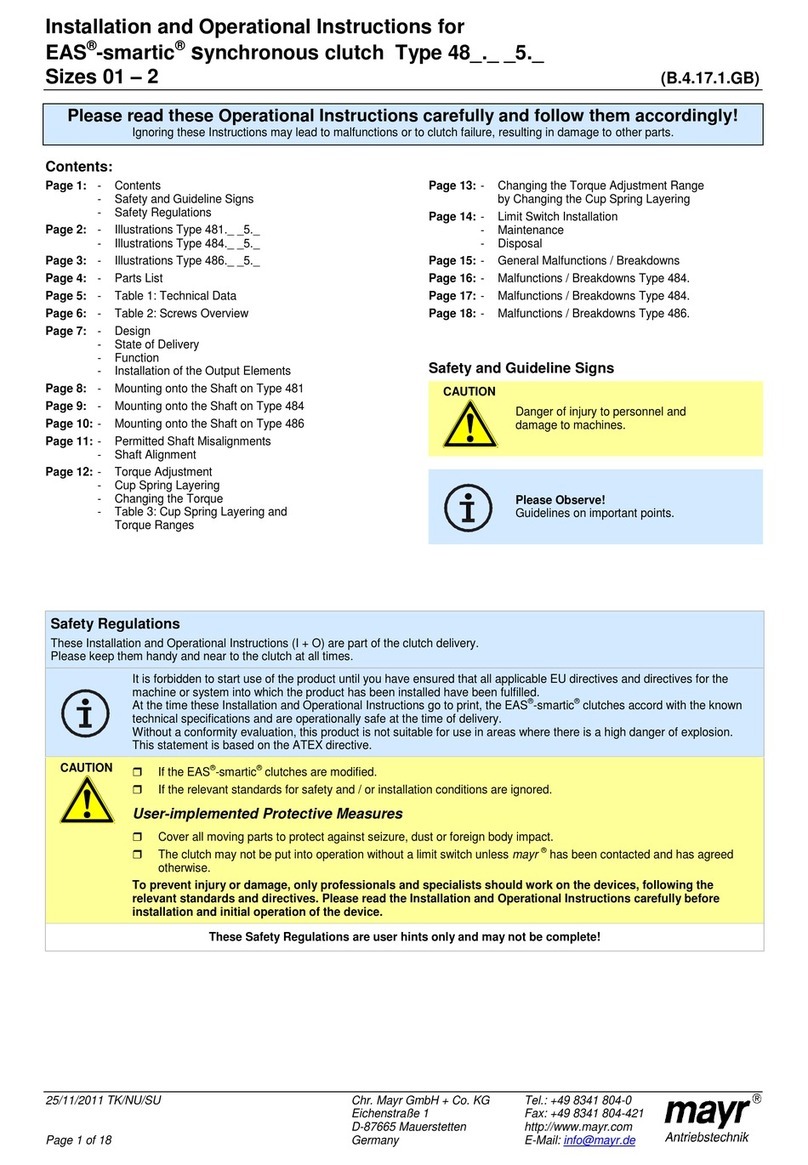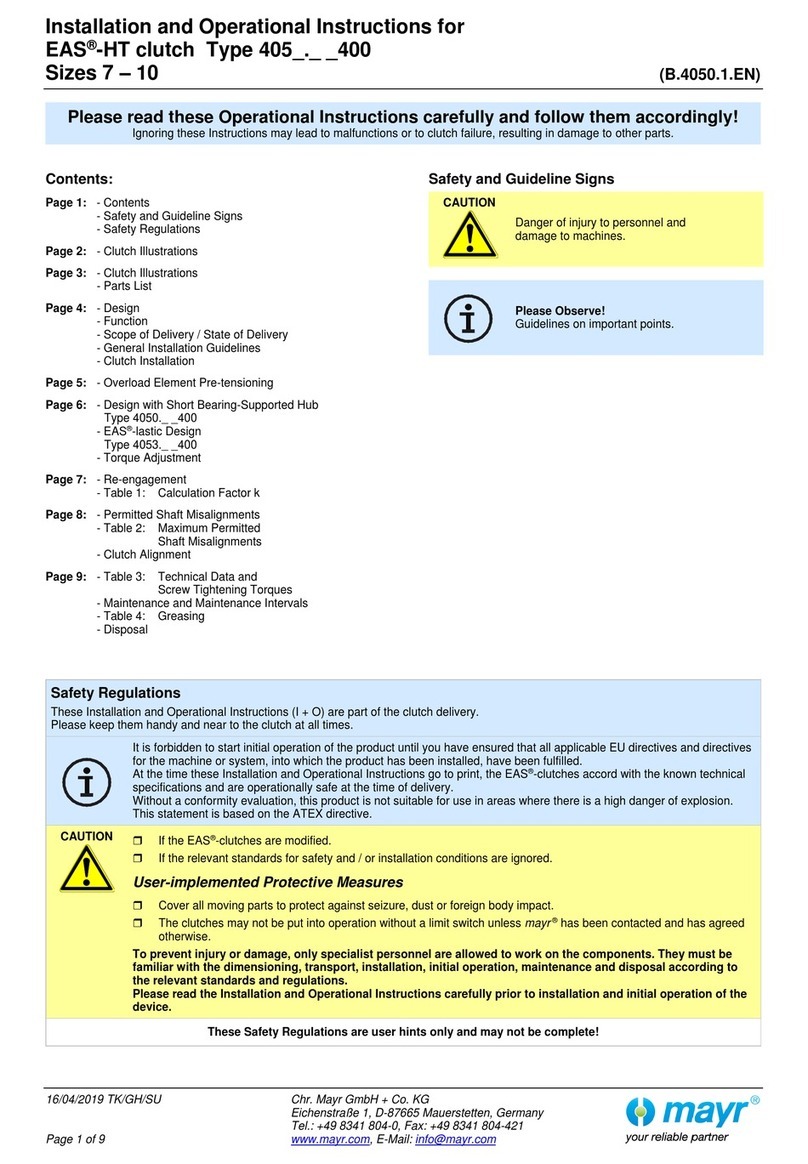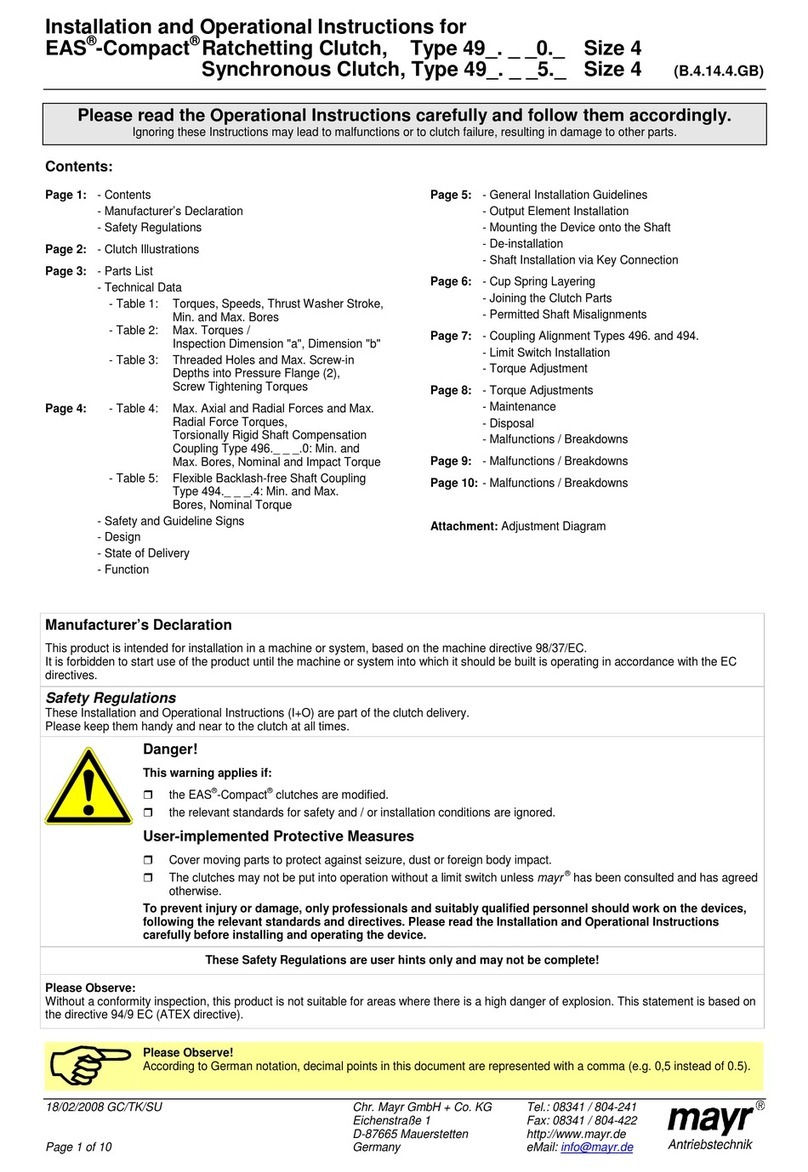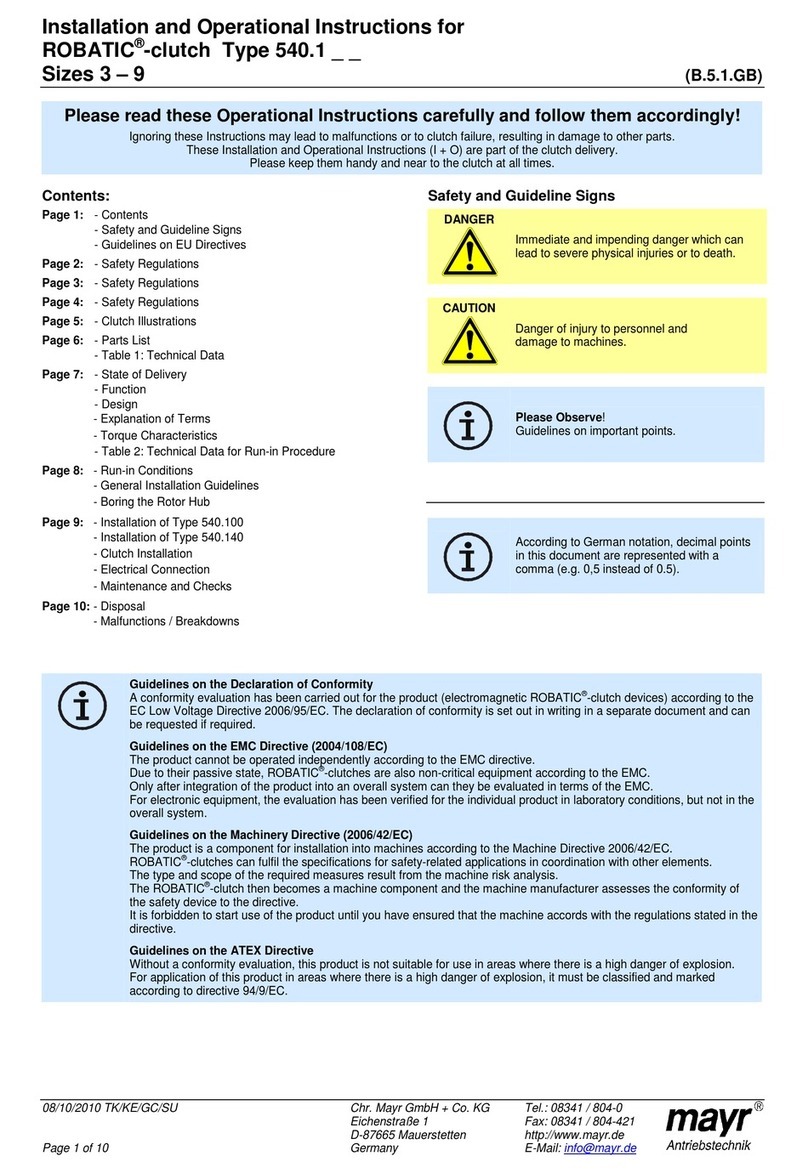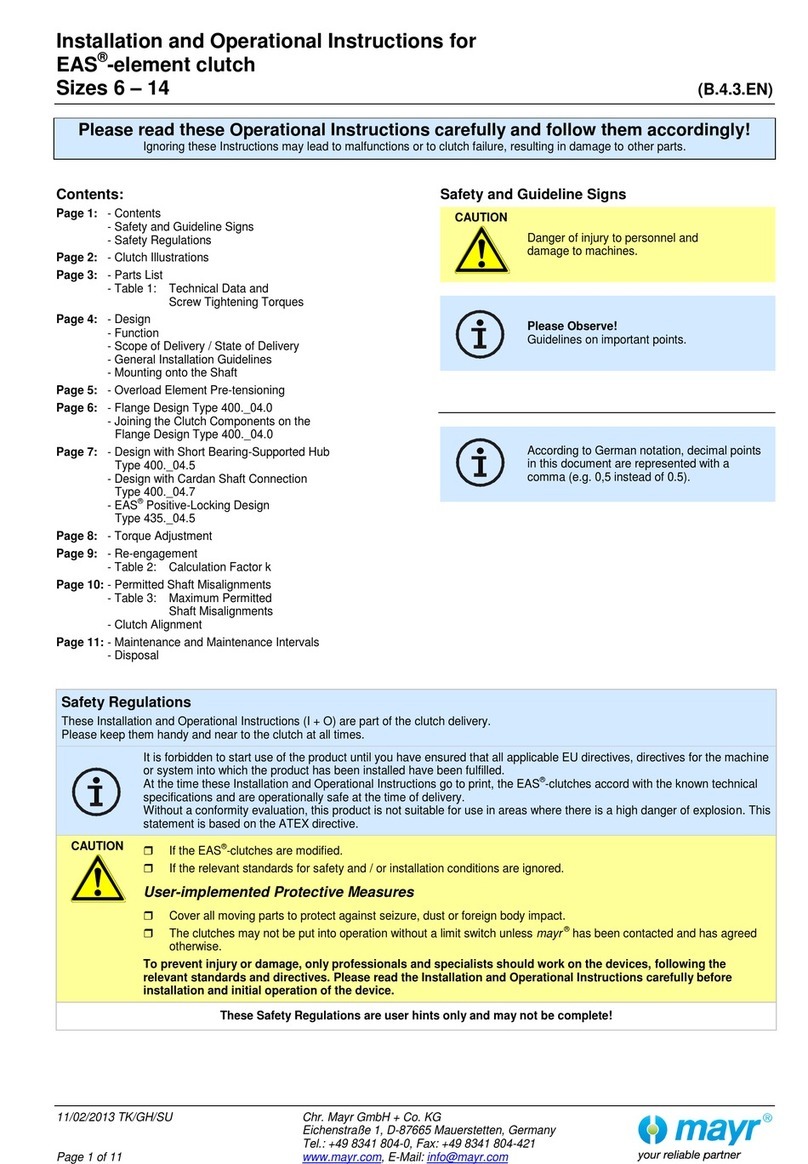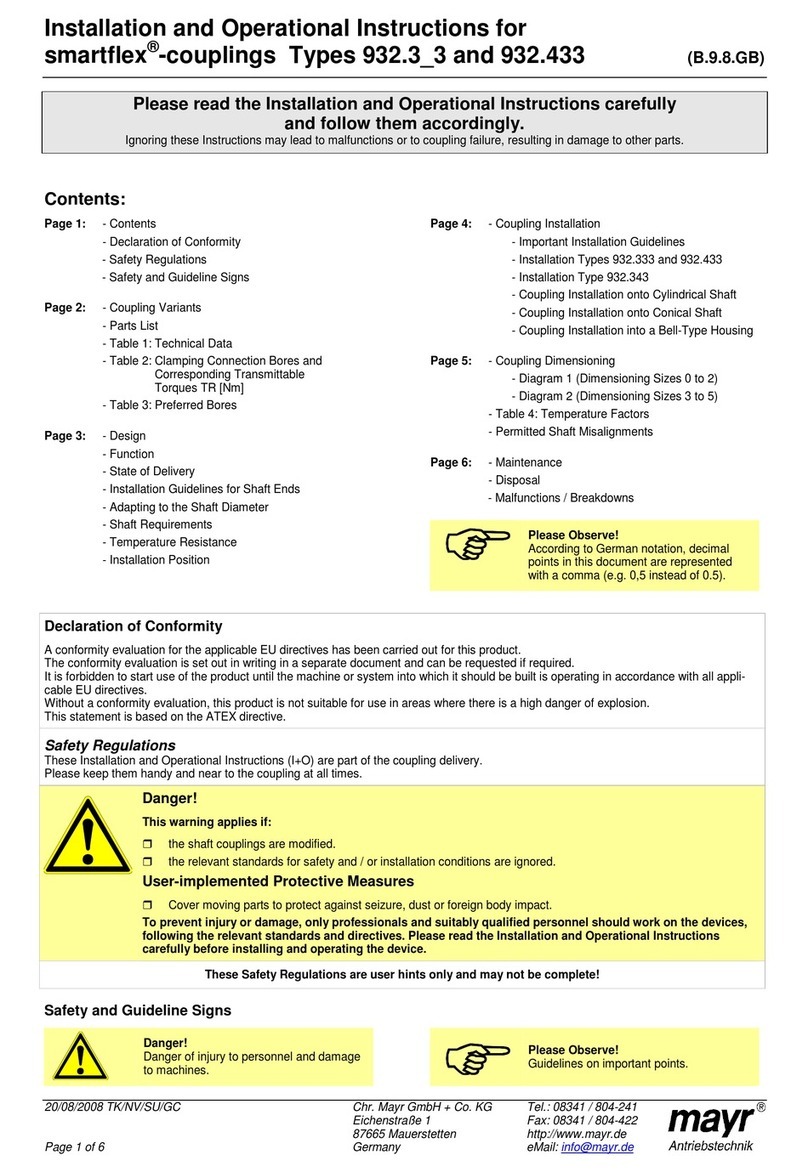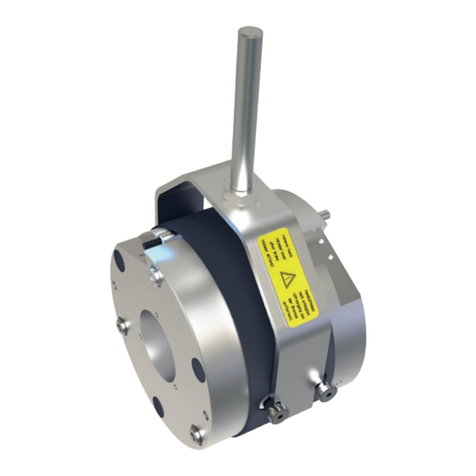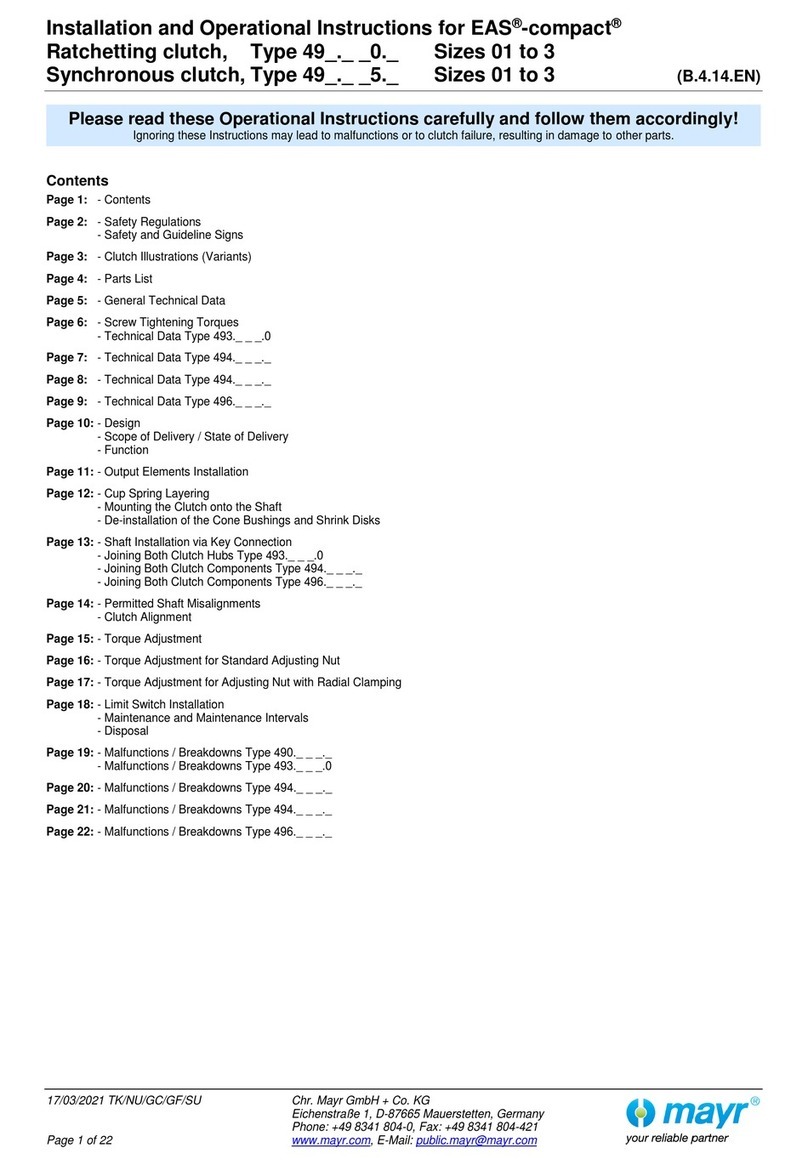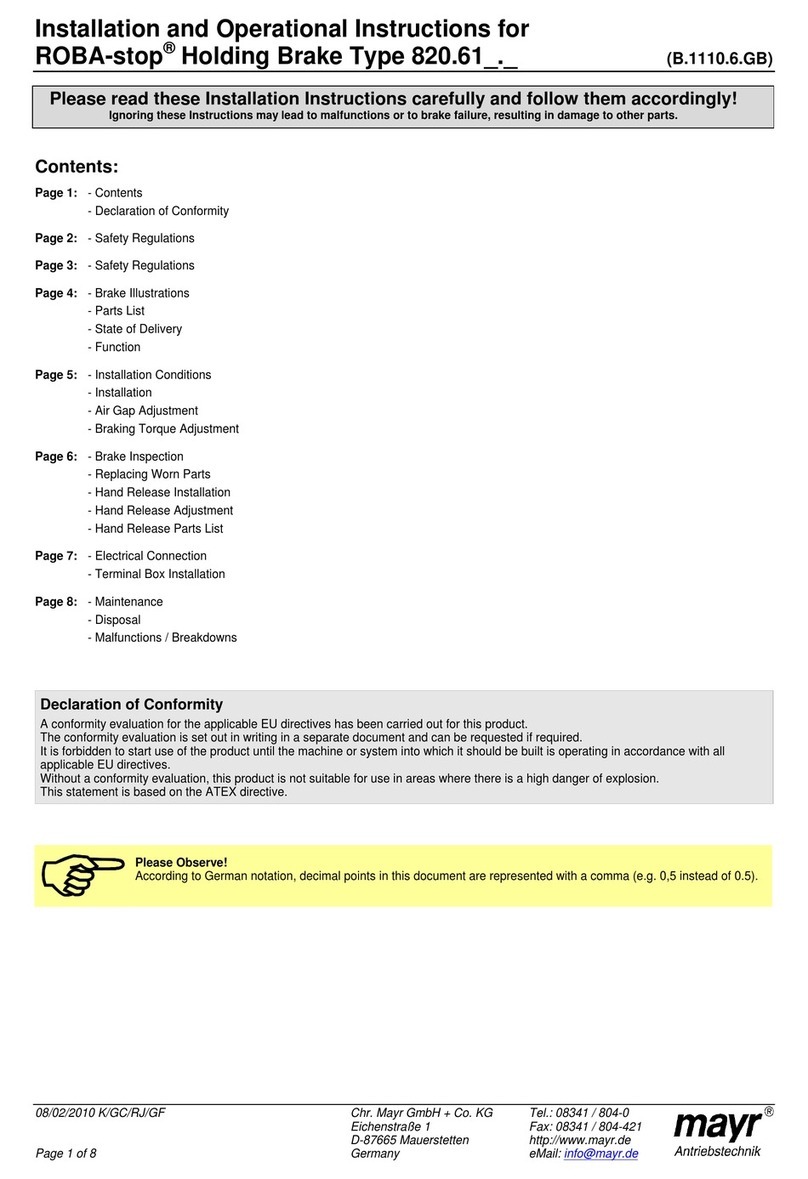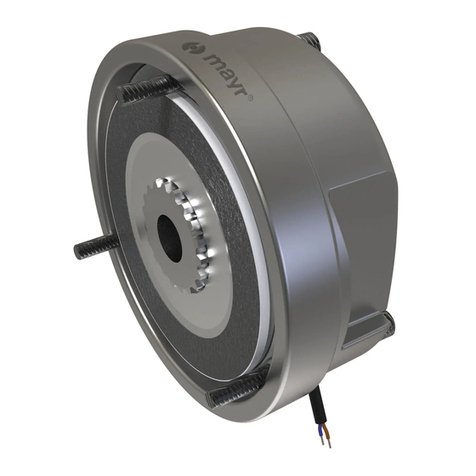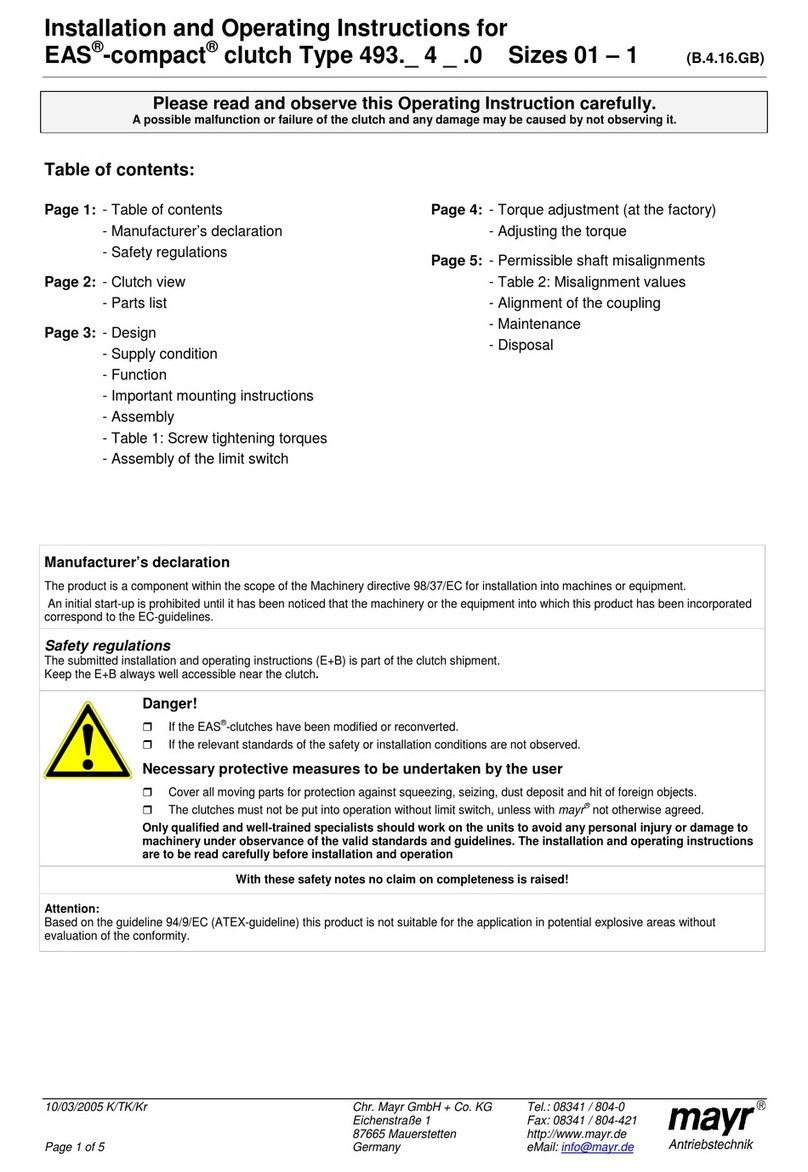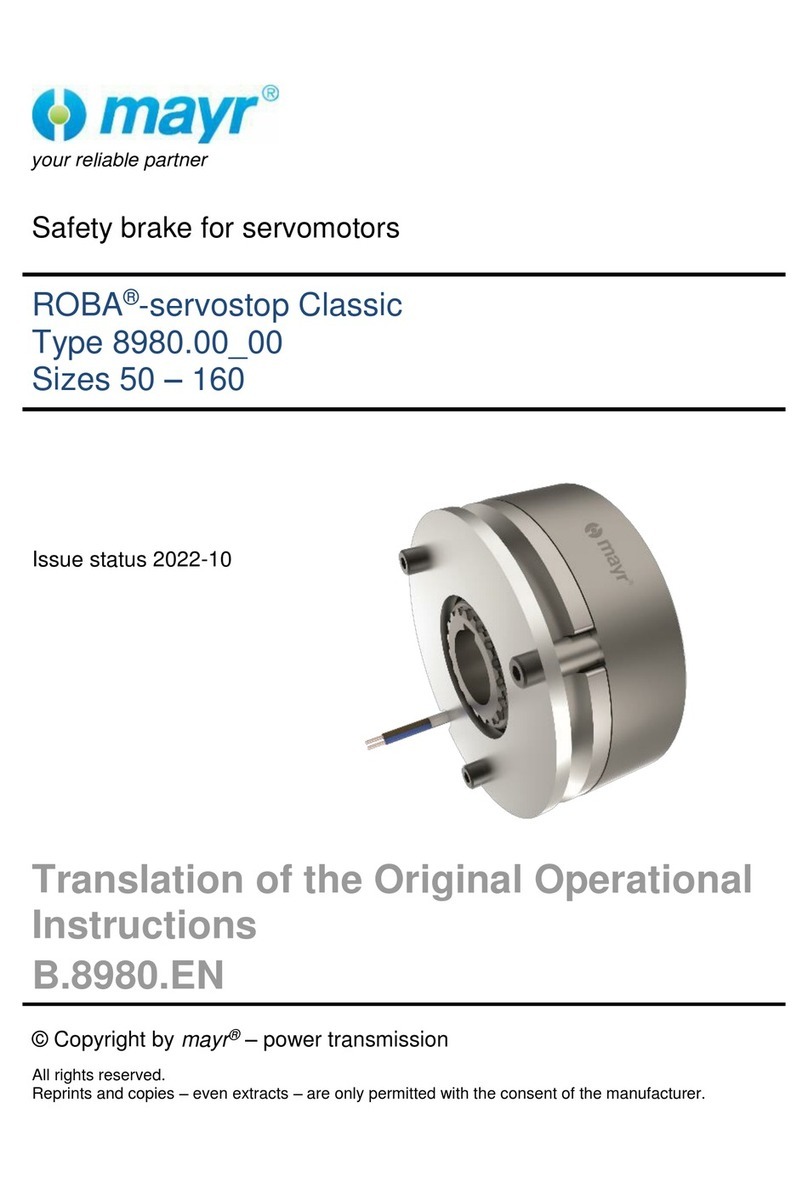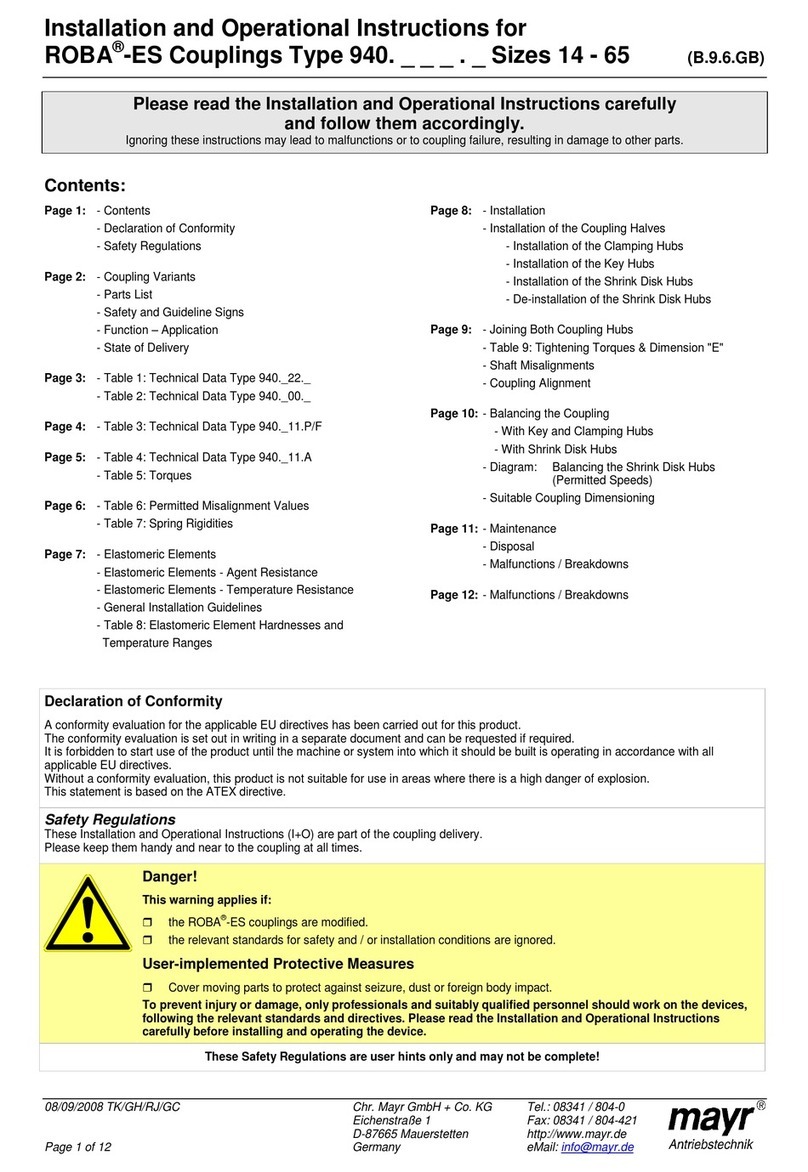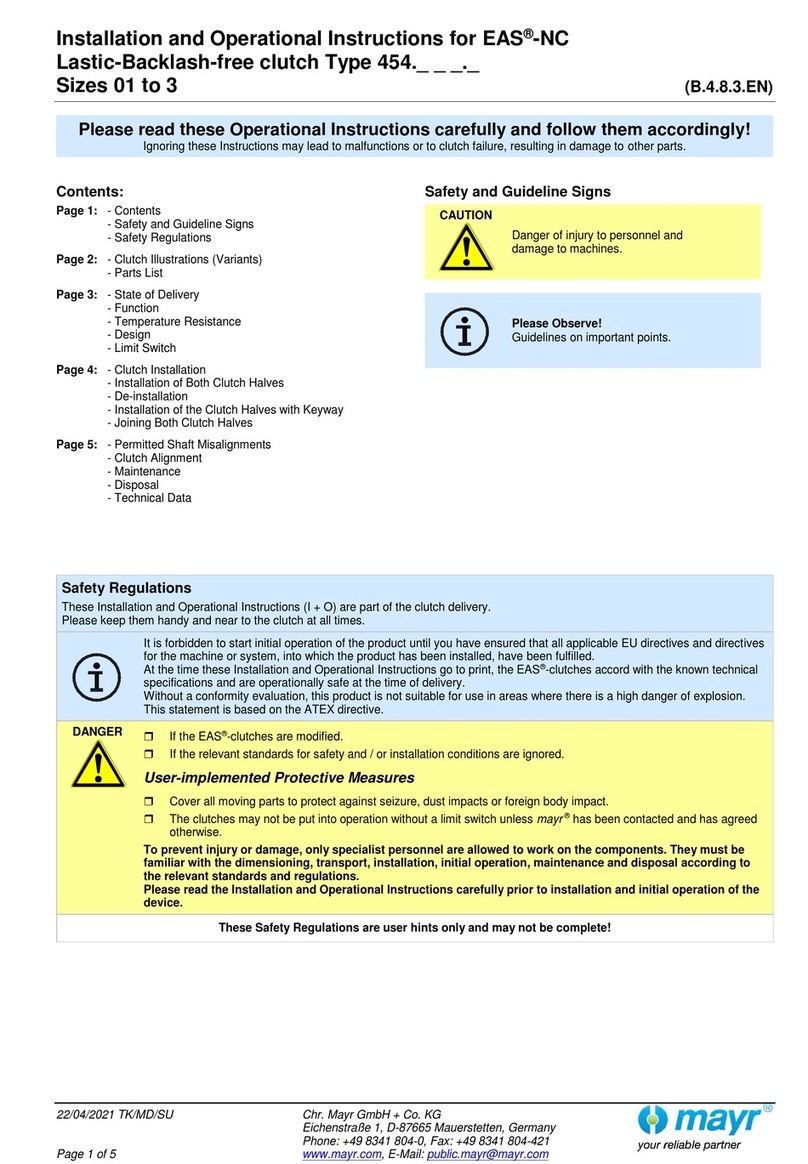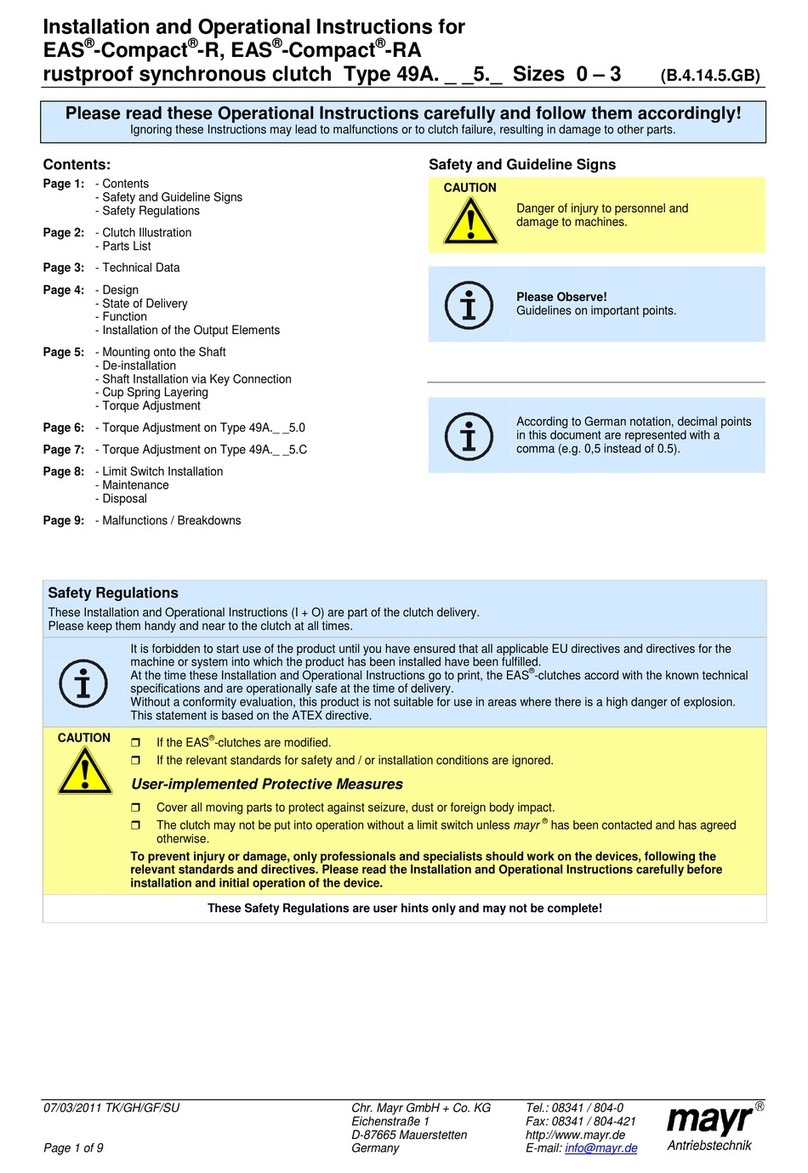
Installation and Operational Instructions for
EAS®-Compact®overload clutch Type 49_._ _4._
Sizes 4 and 5 (B.4.14.2.ATEX.EN)
30/05/2016 TK/GH/SU Chr. Mayr GmbH + Co. KG
Eichenstraße 1, D-87665 Mauerstetten, Germany
Tel.: +49 8341 804-0, Fax: +49 8341 804-421
Page 9 of 19 www.mayr.com, E-Mail: info@mayr.com
Mounting onto the Shaft
EAS®-Compact®clutches include cone bushings or keyways as
part of the standard delivery.
During installation of cone bushings, please observe the
following:
Shaft tolerances from h8 to k6 are permitted.
Shaft surface: finely turned or ground
(Ra = 0.8 µm).
Shaft material: Yield point at least 400 N/mm2,
e. g. St 60, St 70, C 45, C 60.
Degrease or remove conserving layers on the shafts and
bores before installing the clutch.
Greasy or oily bores or shafts do not transmit the
torques defined in the catalogue.
Mount the clutch onto the shaft using a suitable device and
bring it into the correct position.
Tighten the tensioning screws (hexagon head screws Item
17) in 2 steps cross-wise and then in 3 to max. 6 tightening
sequences evenly using a torque wrench to the torque stated
in Table 2.
The transmittable torques of the shaft-hub connection are
dependent on the bore diameter and the quality of the drive
shafts used. Please observe the respective transmission
tables in the valid and applicable product catalogue.
The clutch or clutch hub carries out an axial
movement in the direction of the cone bushing
(16) when tightening the cone bushing (16).
De-installation
There are tapped extracting holes next to the tensioning screws
(hexagon head screws Item 17) in the cone bushings (16).
1) Loosen all tensioning screws (17).
2) Screw out the tensioning screws (17) located next to the
tapped extracting holes and screw them into the tapped
extracting holes up to their limits.
Then tighten these screws until the tensioning connection
loosens.
Shaft Installation via Key Connection
On the EAS®-Compact®with a keyway, the clutch must be axially
fixed onto the shaft after mounting.
This securing procedure can be carried out e.g. via a press cover
and a screw, screwed into the threaded centre hole of the shaft,
and on the lastic-side via a set screw. Please see Figs. 1 and 3.
Joining Both Clutch Components
EAS®-Compact®Type 494._ _4._ (Figs. 3 and 4)
The flexible intermediate ring (24) is pre-tensioned between the
metal claws by joining component 23 with component 25. To do
this, an axial installation force is required.
The amount of force required can be reduced by lightly greasing
the intermediate ring (24).
Use PU-compatible lubricants (e. g. Mobilith
SHC460)!
No unpermittedly high axial pressure should be
placed on the intermediate ring (24) in
completely assembled condition.
Keep to distance dimension “S”, see Fig. 3
and Table 5!
Cup Spring Layering (Fig. 4)
Correct cup spring layering is a prerequisite for problem-free
clutch function and torque adjustment.
For the lower torque range, one cup spring
(Type 49_.5_ 4._),
for the medium torque range, two cup springs (Type 49_.6_ 4._),
and for the high torque range, four cup springs
(Type 49_.7_ 4._) are installed.
1x 2x 4x
layered layered layered
Type 49_.5_4._ Type 49_.6_4._ Type 49_.7_4._
Fig. 6
